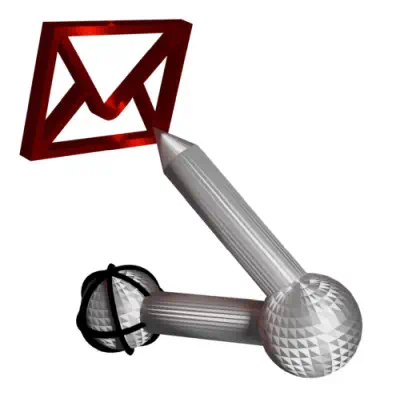AyMINE – Technical documentation
Modules
Integration with ERP Abra Gen
 Task, project & quality management
Task, project & quality management
Manager approval with the task report
Why some data can't be deleted
GDPR and record of qualifications
Qualification of user or contact
Right to Manage Qualifications
Adminitration of areas, projects, calendars
Failure Analysis for an Individual Property of a Component or Process
FMEA – Probability of Detection
FMEA – Probability of Occurrence
 Task, project & quality management
Task, project & quality management
Administration of the Task Management Module
System rights for the task management module
Improvements and Preventive Measures
Methodology and Quality Management systems
What makes up the methodology / SMJ
Problems, tickets and their management
Collaborative Resolution of Multiple Problems
Customer Service Response Generation
Incident and Quality Issue Management
Objects affected by the problem
Problems, Incidents, Helpdesk Tickets
Return project plan by baseline
Sample tasks and methodologies of the area
Effect of the task on the right to modify the attached object
The person responsible for the task
Working procedure – task definition
Management of responsibilities - RACI Matrix
Objects related to the task pattern
 Contacts and directories module (CRM)
Contacts and directories module (CRM)
Address book list and management
Directory or people and companies
Order overview for customer groups
 Contacts and directories module (CRM)
Contacts and directories module (CRM)
System Permissions and CRM Module Settings
Send bulk messages in compliance with GDPR
How to correctly forget a person's details
Unsubscribe and set preferences
for bulk mail
 Web management and automation
Web management and automation
Receiving a message from the web
Human resources
Personalistics – User Permissions and roles
Human Resources module security
Manage department / division data
Overview of Personnel Information for pracov# Employment Contract
Synchronizing staff and system users
 Products, assets and sales
Products, assets and sales
Creating and processing orders
Manage the Property & Business module
Why are the Quality criteria usefull
Managing Finance
Metrics and Measurements
Work summaries from generated data
Technical Modules
Sabre plugin module
Enterprise Architect connector
Database link to Enterprise Architect database
Enterprise Architect connector
System Modules
 The AyMINE Framework Module
The AyMINE Framework Module
AyMINE — Tips for Mobile Usage
Configure how your system looks and works
Gestures and Keyboard Shortcuts
More about how the system works
Private notes and tags for objects
Overview of Modules and Record Types
 GDPR and users of the system
GDPR and users of the system 
The system fully supports GDPR compliance. However, its compliance also depends on the correct use
- GDPR and deleting user accounts
- Example: Why information about past workers is important
- Workers who have terminated their employment and GDPR
- Anonymisation - Forgotten
GDPR and deleting user accounts
The system technically supports deleting user accounts, but in many cases this is not possible. Before deleting, it is necessary to ensure that the user is not responsible for projects and areas, as these must not be left without the user.
Example: Why information about past workers is important
The worker was given the task of verifying the accuracy of the bridge load calculation. He later left the job, but it remains necessary for your company to be able to trace not only who did the calculation, but also what qualifications and certifications he had.
The bridge documentation includes protocols, which probably include the names of the people who carried out the checks. In case of an audit or problems, however, a name is not enough; it is also necessary to trace the exams and certificates that confirm his qualifications. You may need these years later.
An even more complicated situation arises when it turns out that the worker did not do the job properly or even cheated. You also need to trace back which jobs were under his responsibility and need to be revised. Without an information system and retained links to tasks, this would be an almost impossible task requiring many years of going back through the project archives. Thanks to links in the system, you can get the necessary information literally in a few clicks.
Workers who have terminated their employment and GDPR
A worker who has left can be required to be forgotten under GDPR legislation. In practice, it is not possible to completely forget a worker because there are legal reasons (e.g. payroll documentation) as well as legitimate needs of the company (e.g. the example described above) that require the information to be kept. Nevertheless, the company is obliged to ensure that the user is "forgotten" where legal reasons or legitimate interests cannot be applied.
Example: A worker has left the company and demands to be forgotten. The company must ensure that information about him is not available in the company beyond legal obligations and legitimate interests. Apart from people with access to the HR archive, information about past employment should be given to people only when necessary - i.e. during audits and work checks, investigations of problems or even criminality.
In AyMINE, forgotten user accounts have a special status. The user's name is changed and the real identity can only be obtained by a way that requires special permissions. This makes it possible to find out who did the task, decision or other activity, but information is only obtained by workers who have a reason to do so.
Account deletion removes personal information
Account deletion removes all personal information that the user has created in the system:
- Own object notes
- Personal tags on objects
- Personal pockets with objects
Account deletion does not remove personal data - name and email.
Anonymisation - Forgotten
Anonymization is also possible to meet GDPR requirements. Anonymization is possible only for deleted accounts.
Anonymization ensures that staff working with the system will not be able to detect that a former user whose account has been anonymized had an account in the system. The account will be presented with an anonymous name.
However, to ensure legal obligation, the anonymized account keeps a record of the employee's actual name in the history. In case of a request for historical identification of the employee, this information can be traced. At the same time, personal data of the employee can never again be subject to bulk data processing, automated profiling or made available to users except for targeted searches of specific data for forensic reasons.
Anonymization does not remove the user's name from historical records that indicate in activity reports who performed the operation. This record, which is equivalent to the signature of the employee on an internal document, does not violate GDPR principles. It cannot be subject to further processing.
Anonymization fully complies with GDPR requirements. It does not have to comply with the organization's internal regulations and before performing it, the administrator must verify that it is performed in accordance with internal methodologies and regulations.